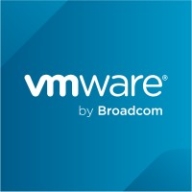

CloudCheckr and VMware Tanzu Platform participate in the cloud management and application modernization category. CloudCheckr has the upper hand in cost management and customer support, while VMware Tanzu stands out with a more comprehensive set of features for cloud-native applications.
Features: CloudCheckr provides effective cost management tools, security compliance monitoring, and cloud automation utilities. VMware Tanzu Platform delivers strong container orchestration, Kubernetes integration, and application lifecycle management capabilities.
Room for Improvement: CloudCheckr could enhance its application modernization features and expand container orchestration support. Improving multi-cloud monitoring and reporting is also a potential area for advancement. VMware Tanzu Platform could benefit from refining cost analysis tools and making its initial setup more intuitive. Enhancements in real-time analytics and further simplification of the user interface may also be beneficial.
Ease of Deployment and Customer Service: VMware Tanzu Platform features an integrated deployment process suitable for complex applications and microservices architecture. CloudCheckr is known for its user-friendly setup and proficient support focused on cloud cost management.
Pricing and ROI: CloudCheckr often has a lower initial setup cost, enabling quick cost savings through efficient financial management tools. VMware Tanzu demands a potentially higher initial investment but offers long-term value with scalability and enhanced developer productivity.
| Product | Market Share (%) |
|---|---|
| VMware Tanzu Platform | 1.1% |
| CloudCheckr | 1.3% |
| Other | 97.6% |


| Company Size | Count |
|---|---|
| Small Business | 2 |
| Midsize Enterprise | 1 |
| Large Enterprise | 5 |
| Company Size | Count |
|---|---|
| Small Business | 10 |
| Midsize Enterprise | 3 |
| Large Enterprise | 10 |
VMware Tanzu Platform is designed for cloud-native development and management of Kubernetes, CI/CD processes, microservices, and containerized workloads. It supports deployments both on cloud and on-premises, providing centralized management via Mission Control.
VMware Tanzu Platform offers seamless integration with vSphere, ESX, and vSAN, supporting centralized cluster management and lifecycle management. The platform provides a GUI for monitoring CI/CD pipelines and network policies, enhancing multi-tenancy and Day 2 operations. Users can easily manage Kubernetes clusters, monitor applications, and integrate with tools such as GitHub, GitLab, Cloud Foundry, and Azure. It ensures compliance and security for service providers, financial institutions, and businesses.
What are the key features of VMware Tanzu Platform?
What benefits and ROI should users look for in VMware Tanzu Platform reviews?
Industries such as financial institutions, service providers, and businesses requiring rigorous compliance and security deploy VMware Tanzu Platform. These entities benefit from centralized management, streamlined DevOps processes, and integrated tools, enhancing their capabilities in cloud-native developments and containerized workloads.
We monitor all Cloud Management reviews to prevent fraudulent reviews and keep review quality high. We do not post reviews by company employees or direct competitors. We validate each review for authenticity via cross-reference with LinkedIn, and personal follow-up with the reviewer when necessary.